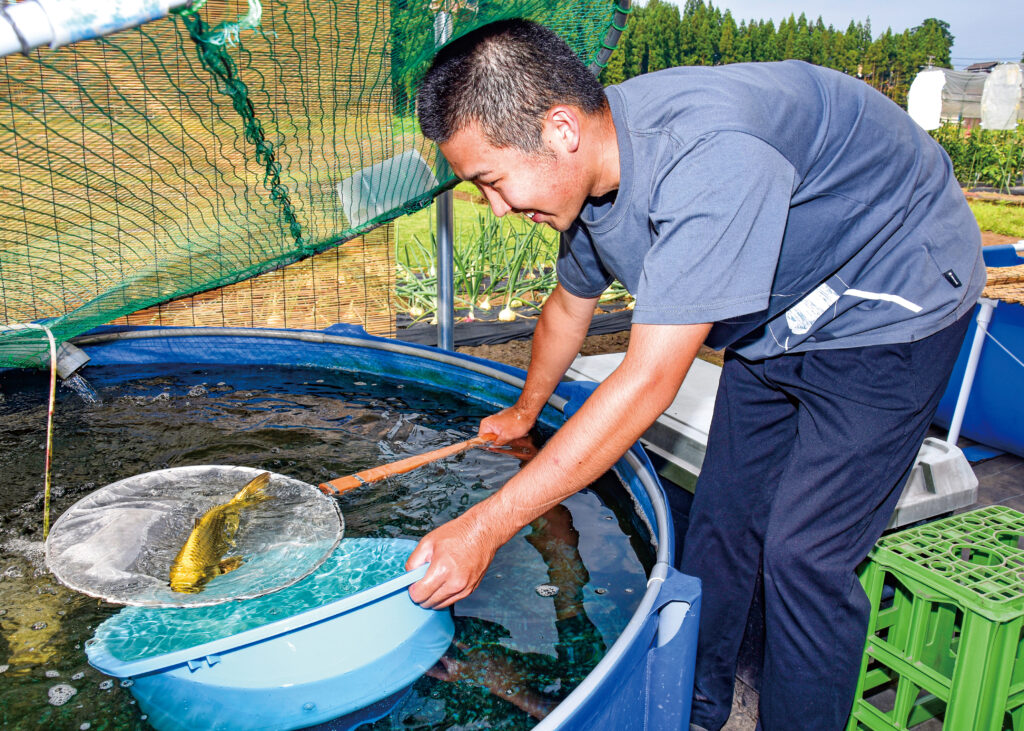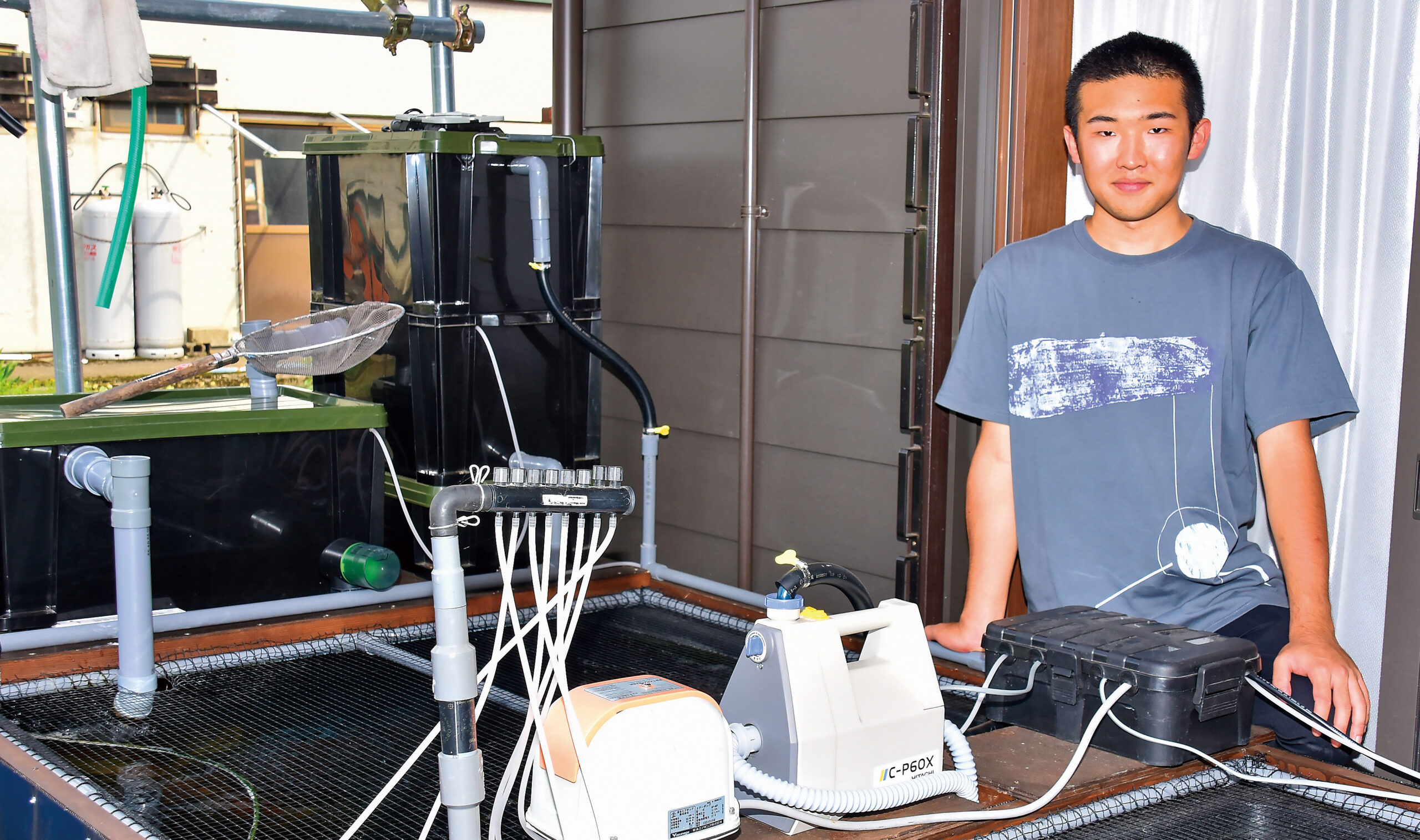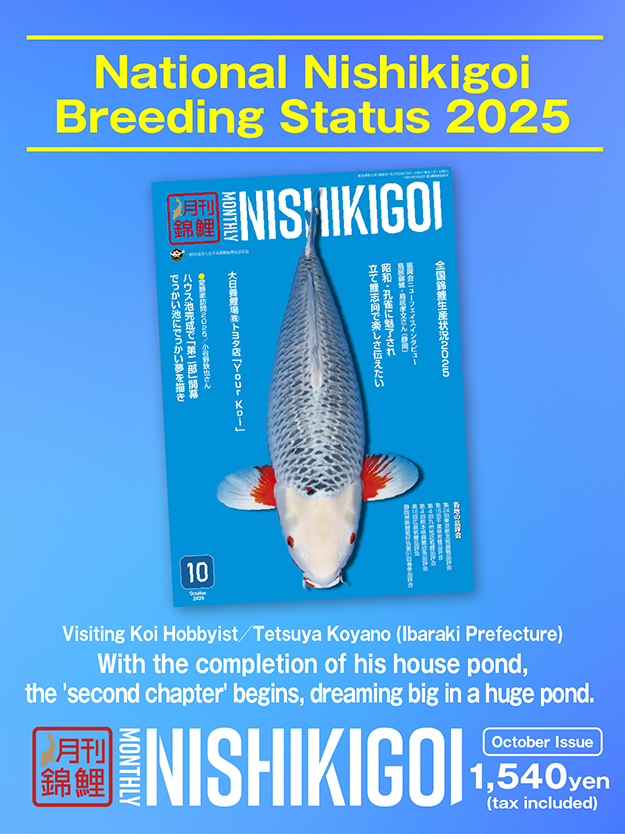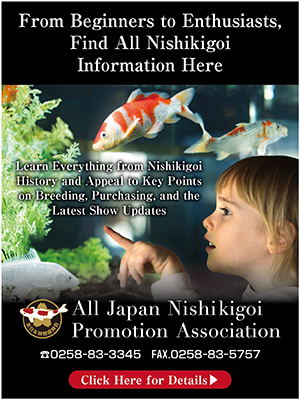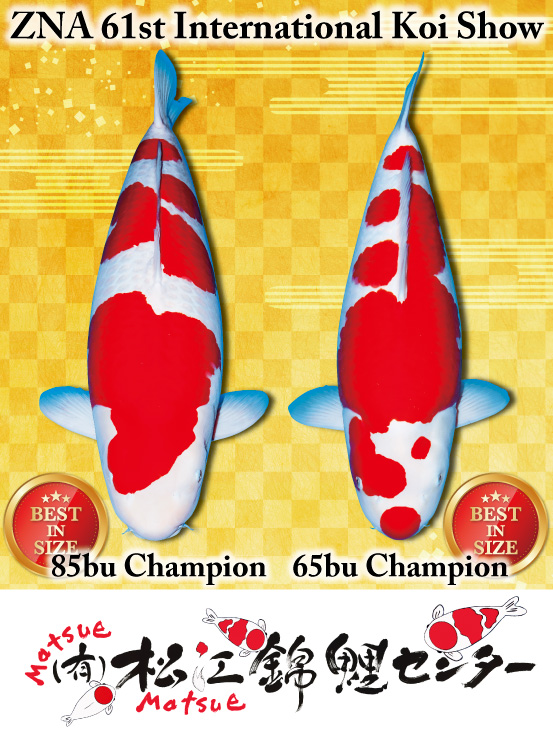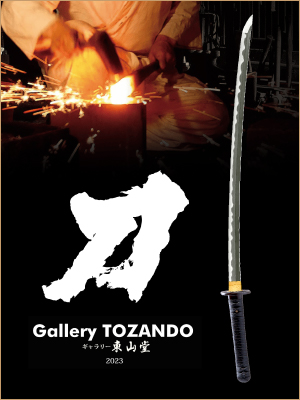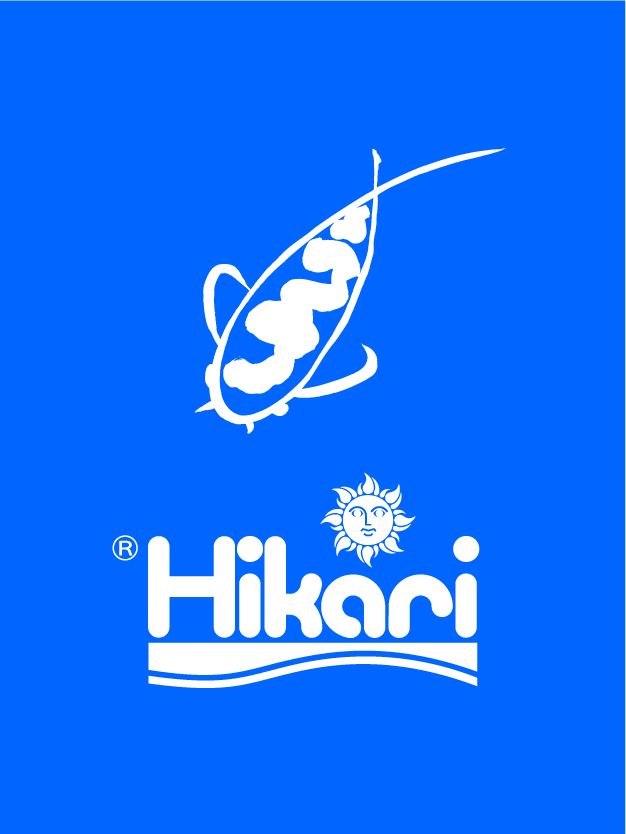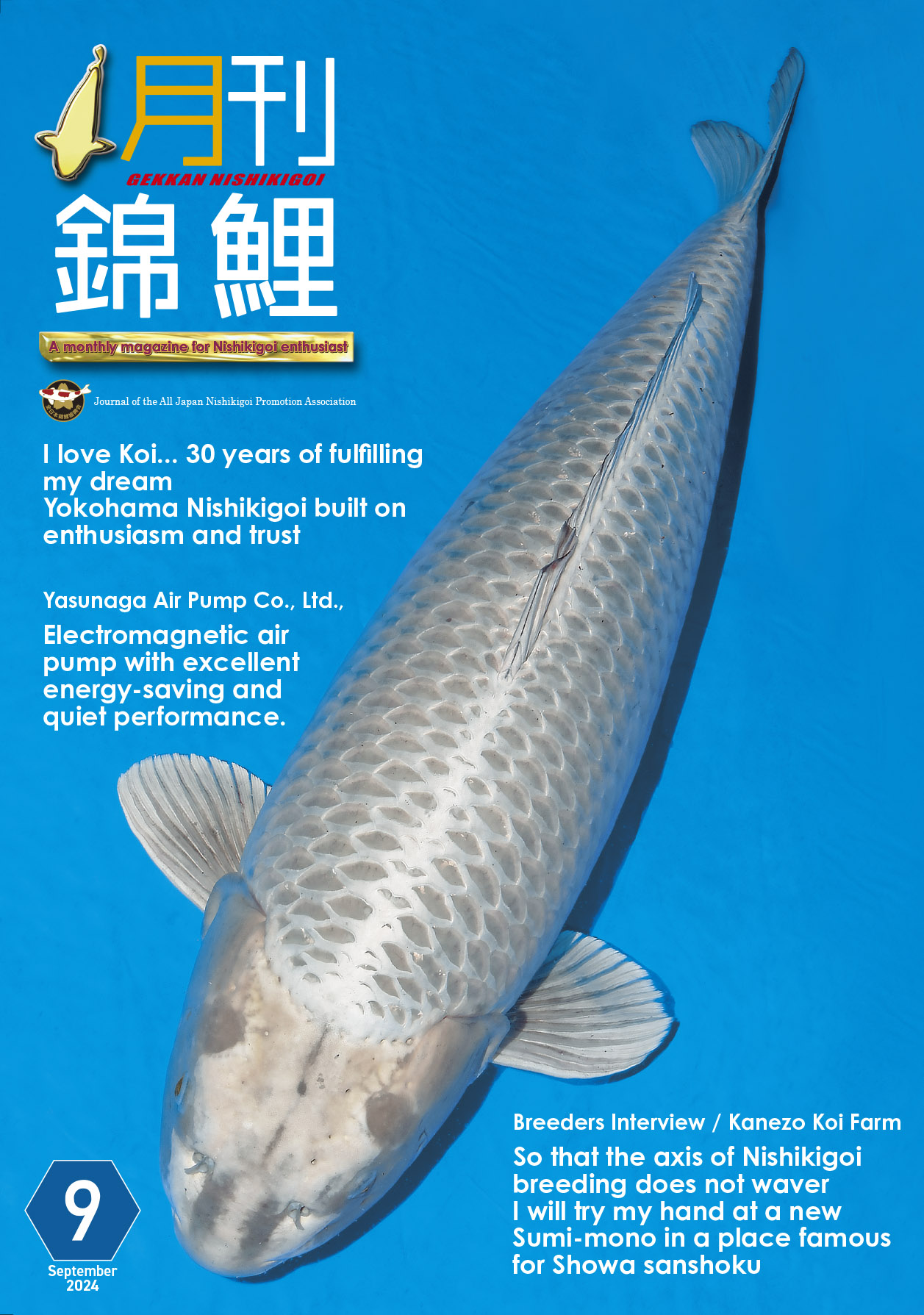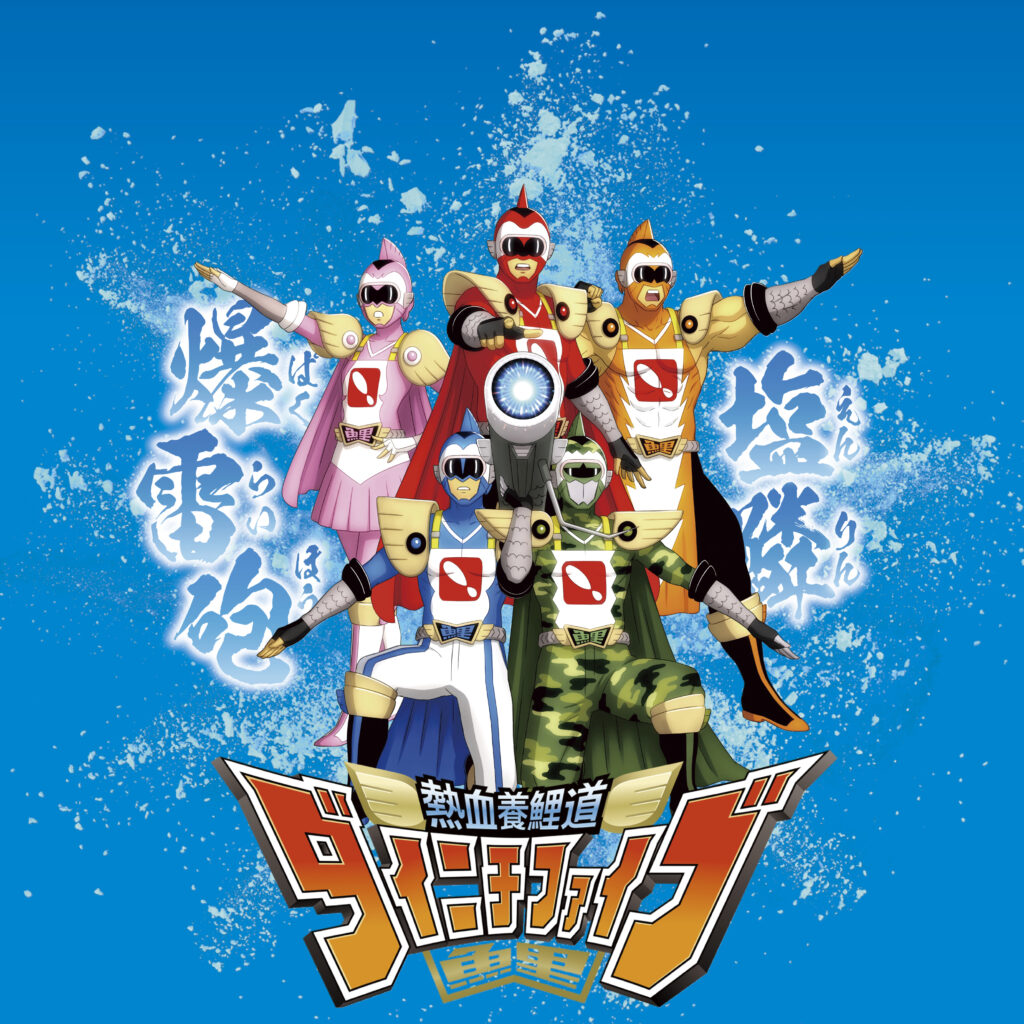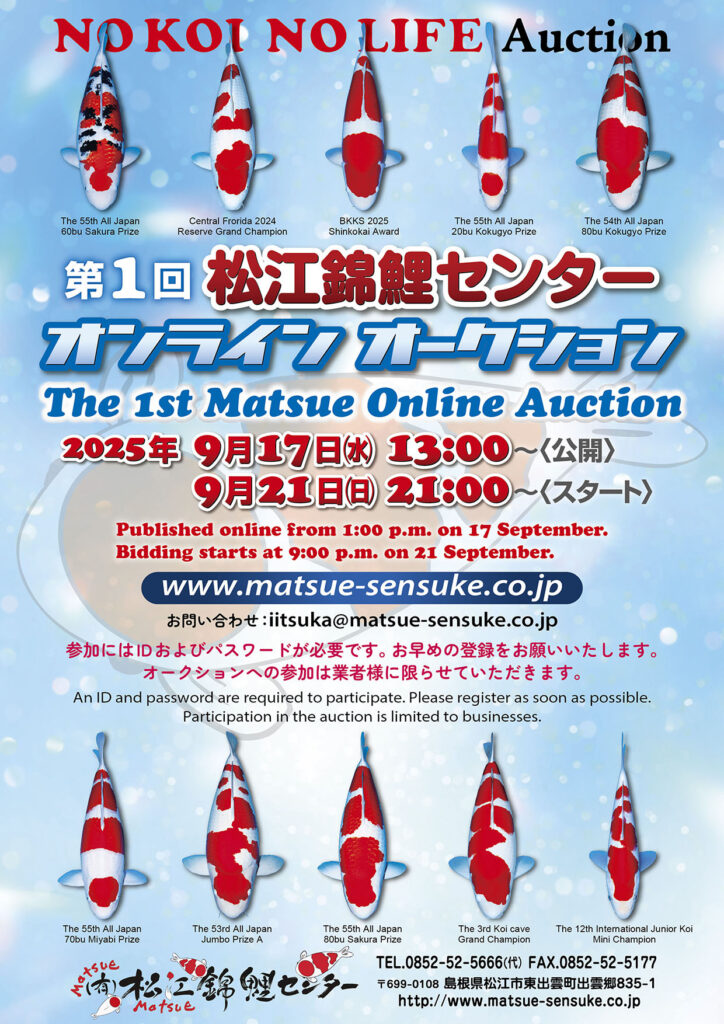Breeding Nishikigoi in Snowy Regions with Many Hardships
“Someday, I’ll produce my own Sanshoku…”
― Keeping koi in snowy regions must come with many challenges, right?
Nozaki: This Tsunan Town is one of the heaviest snowfall areas in Niigata Prefecture, so it’s quite tough. Originally, I wanted to space the two jumbo boxes a bit wider apart and install two pumps side by side. However, that would require extending the roof length as well. To prevent direct snowslides from the house roof from damaging them, I had to carefully arrange everything to keep the setup as compact as possible.
― Does round pool have a roof? What do you do during the winter?
Nozaki: Round pool is only set up seasonally, from spring to autumn.
― Do you reset it every year?
Nozaki: That’s right. In the fall, we drain the pond, dismantle the filtration tank and scaffolding pipes, and store everything away. The koi are moved to a large container. Heating the pond would make the electricity bills skyrocket, so we cover the entire area with sheets to block out snow and cold air. Since the pond is set up facing the living room window, we can still see the koi right away by opening the window even in winter.
― Spring and autumn are quite a handful, aren’t they?
Nozaki: This spring, the snow melted late, so all kinds of work got delayed. But I think we’ll stick with this round pool style for now. Besides, if we don’t use the round pool, we’d have to reduce the number of koi even further—so we really have no choice but to go with it (laughs).
But, when considering winter removal, we can’t fix the pipes with adhesive, so the connections often come loose, and the pond water nearly dries up—plenty of troubles arise. In that sense, with the round pool, even if something unexpected happens, we’ll keep koi that are relatively less affected by such damage in it.
― I see. What about adding more ponds in the future?
Nozaki: If we had a pond of about 10 tons, we could keep a lot of large koi. So, when building a house here, I tried hard to negotiate to have a big pond constructed, but unfortunately, it was rejected, and we couldn’t build one (laughs).
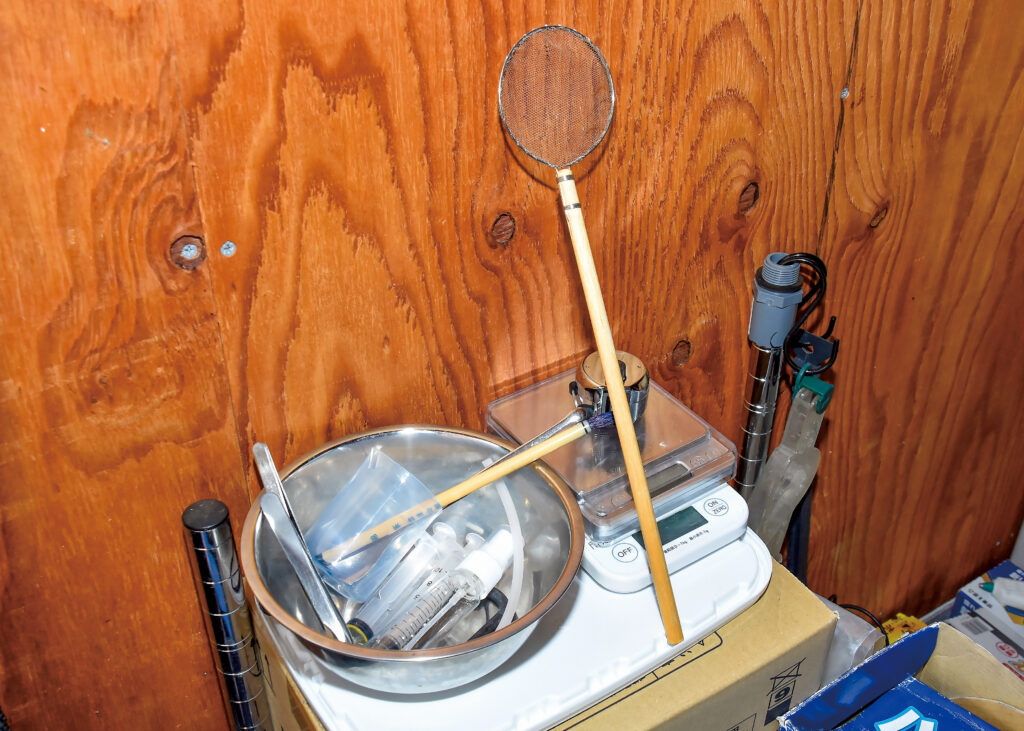
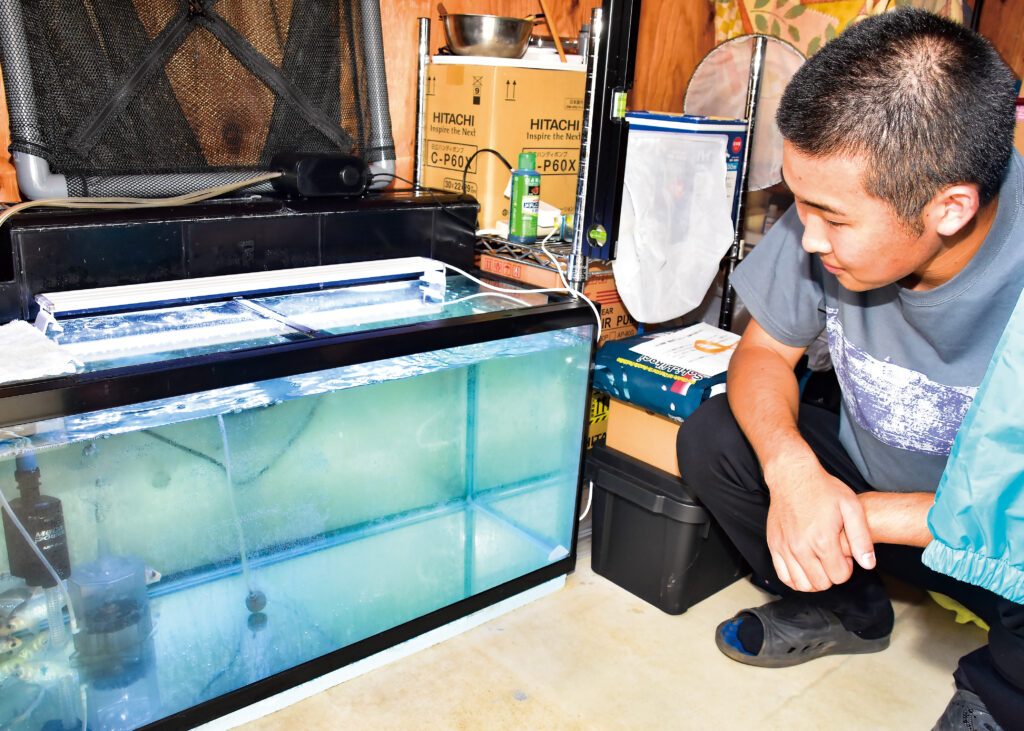
― You just entered university this year, could you tell us what you want to do in the future?
Nozaki: My dream is to not go to graduate school. After graduating in four years, I plan to apprentice with koi breeders for a few years, and then open my own koi store. This has been my dream since kindergarten, and I hope to achieve it. If I’m being greedy, I’d love to acquire Takahashi-san’s three-color lineage and use it to breed koi. That would be the best possible outcome. I’ve seen many koi over the years, but once you’ve seen Takahashi-san’s Sanshoku or Matsunosuke-san’s Sanshoku…
― After all, you still can’t let go of your longing for the Sanshoku, can you?
Nozaki: That’s right. I really want to create them myself. You often hear people say, “You can tell whose koi it is just by looking at it”, don’t you? I want to become a breeder who can create such distinctive koi in Sanshoku. Tsunan Town has an abundance of high-quality water, so I think it’s a great environment for raising koi.
― Even though the production area is Niigata, many producers are quitting due to aging. Do you want to continue working in Tsunan?
Nozaki: In Tōkamachi, Mr. Koumai (Nishikigoi Koumi) recently won a category award for the Goshiki variety at the National Young Koi Show. Mr. Takahashi also took the Young Koi Grand Champion at the 43rd All Japan Koi Show and the Kokugyo Prize at the 5th International Junior Koi Competition. Everyone here really has their own unique style and produces excellent koi. However, since there are no successors, these bloodlines will disappear—which would be such a waste. That’s why I’m thinking of carrying on their legacy.
― I see. By the way, don’t you participate in koi show?
Nozaki: I’ve never entered a competition even once. It’s not that I’m not interested, but how should I put it… If I were to participate, I’d want to submit koi that I’ve raised myself, and to do that, I feel I haven’t yet bred koi that I’m fully satisfied with. Also, the competitions I could enter are limited around here, and when it comes to international young koi show, the scale suddenly becomes much larger, so I think I’m fine just being a spectator for now.
Lately, as I’ve been breeding koi, I’ve come to appreciate the importance of quality—it’s really about koi that last long. There was a time when I got about five koi from a certain dealer, and not a single one survived. So, in the end, the most enjoyable koi to keep are the ones that thrive for a long time.
― You’re still in your teens, which makes it quite rare for someone your age to be so fond of koi, right? I hear you’re leveraging your youth to share your breeding experiences on social media.
Nozaki: Surprisingly, there aren’t many enthusiasts in Niigata. When I tell people that Niigata is the birthplace of Nishikigoi, a lot of them are shocked. Right now, I’m active on Facebook, Instagram, Threads, and YouTube, where I post about local koi competitions and introduce breeding setups. Lately, I’ve been slacking a bit because university has kept me busy, but I want to keep pushing forward with this dual life of academics and Nishikigoi (laughs).
― We hope you will help energize the Niigata region as a promising young enthusiast, and we look forward to the day when we can see the koi bred by Mr. Nozaki at a koi show.

